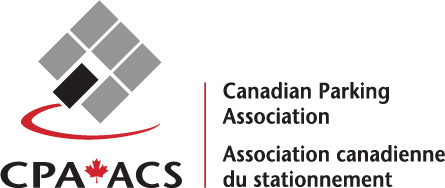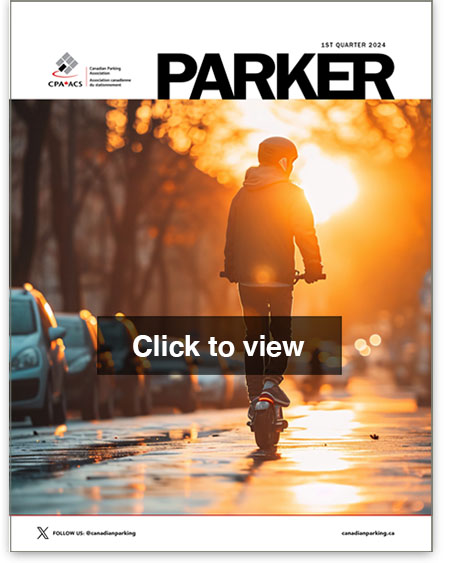By Renee Smith
Data breaches are a constant worry for any business that accepts credit card payments. Over the past decade breaches have become increasingly common, and some of the world’s best known companies, including Home Depot, Target, and TJX, have been the targets of sophisticated attacks through which millions of customers have had their personal and credit data compromised. The sad reality of modern life is that any type of personal or financial data that is obtained electronically and transmitted or stored online is potentially at risk.
The parking industry is not immune to this risk. In fact, now that credit card payment is the dominant and preferred form of payment at most parking facilities, parking owners and operators—both public and private—must be particularly vigilant about protecting customers’ financial data.
The credit card industry, through the Payment Card Industry Security Standards Council (PCI SSC), established a framework to help merchants (including parking owners and operators) protect data. The Council has established the Payment Card Industry Data Security Standard (PCI DSS), which is a set of requirements designed to assure that all companies that process, store, or transmit credit card information maintain a secure environment.
On April 28, 2016 PCI SSC released PCI DSS version 3.2, which replaces version 3.1, to address a growing number of threats to customer payment information. This version becomes effective on February 1, 2018. On May 27, 2016, PCI SSC released PA DSS version 3.2, which becomes effective on June 1, 2016. Until their respective effective dates, parking owners and operators should look to these standards as best practices that can help protect their organizations and their patrons.
What do the newest details of PCI DSS v 3.2 adherence entail? Organizations are subject to two significant new requirements. First, they will need to implement a change control process. Second,…
By Bill Smith
The parking industry is in the midst of what may be its most exciting era. We have seen a lot of change over the past fifty-plus years, including major advances in parking design, planning, and management. These innovations have transformed our communities and improved the quality of life immeasurably. But no period in the parking industry’s history has seen so much exciting change.
What’s so exciting? The technology age that is so important to our everyday lives is transforming parking. New technologies are constantly being introduced to the marketplace, from pay-by-phone technology to online reservation services to innovative facility management packages, just to name a few. Each offers to make parking more customer-friendly, efficient, manageable, or profitable.
But perhaps the most important technologies revolve around parking guidance. Parking guidance tools use sensors to record whether a particular space is occupied. This information is then transmitted to LED signs that guide drivers directly to available spaces. Sensor-based systems also typically have the ability to compile occupancy data to allow parking owners and operators to manage their parking assets more efficiently and profitably.
Clear Benefits
“Guidance systems move motorists into parking spaces quickly and reduce congestion throughout a facility,” according to Shareena Sandbrook, managing director from FrogParking Ltd. “This has benefits for customers in different ways. For example shopping mall operators need to maximize the time customers are in retail areas to boost revenues. While for airports, the goal is to make parking easy and efficient for people hurrying to catch flights. A guidance system shows them quickly, at a glance, where parking spots are available.”
And that’s also the appeal to parkers. Parking guidance systems eliminate the need for drivers to circle parking decks looking for an open space. As soon as a driver approaches a parking structure with a guidance program, exterior signage…
Integrating digital technologies into dynamic parking management
By Indigo
Introduction: THE NEW MOBILITY
As a symbol of freedom, mobility, and autonomy, the automobile has changed the shape of our cities and suburbs, yet in the past century, it has evolved beyond our expectations.
Cars now come equipped with advanced hardware that can avoid collisions, they can be self-driving, and yet the great paradox is that a typical car spends most of its time immobile. A car is parked on average 95% of the time, when it is not stuck in a traffic jam.
The digital revolution, a major upheaval caused by technological advances, primarily computers and the Internet, has placed us in an era of accelerating change.
In industrialized countries, this change has shaken several sectors of the economy. While cars become sophisticated enough to be self-driving, and as automakers become mobility providers, cities become smarter by using and integrating new technologies to meet the challenges of the modern city: transportation, governance, and citizen services, to name a few.
Traffic congestion ranks high on the list of evils that afflict urban areas. It increases greenhouse gas emissions and is largely responsible for the smog in big cities. The search for available parking is, in part, largely responsible for congestion – 90% of city motorists lose up to 20 minutes a day looking for a parking space, by slowly circulating, or by immobilizing traffic to parallel park.
With the emergence of “smart” parking, solutions such as nested technologies in the roadway and parking areas, and connections to new mobile tools are being put in place.
The technological solutions to make parking more fluid, by eliminating traffic obstacles, and customizing and facilitating the driver’s experience exist.
But the growing digital revolution has seen the emergence of a large number of contenders for the next “unicorn”, technological start-ups that disrupt sectors of the…
By David Poole
In a program involving 13 hospital parkades in Calgary and Red Deer, Alberta Health Services (AHS) upgraded old HID lighting to LED technology, creating an annual cost savings of almost $250,000, while bringing light levels to current standards, and improving the overall quality of illumination.
Illumination in many covered or underground hospital parking lots in Alberta is provided by a mixture of HID (High Intensity Discharge – typically metal halide or high pressure sodium) and fluorescent T8 lighting. Lighting levels varied greatly, from very dim in some cases, to illuminated well beyond current standards for parkade lighting in others. In a retrofit and redesign program, funded by AHS Parking Services department, thirteen parkades were selected for a change-over to LED lighting technology. It should be noted that AHS Parking Services is an ancillary operation and is committed to providing an operation that is sustainable, effective and efficient. With this in mind, the project included a redesign of the lighting, and the use of motion and ambient daylight sensors in order to provide adequate light at all times and further reduce energy consumption and costs.
Project Details
Alberta Health Services engaged a lighting consultant to provide tender documents for the upgraded lighting system and provide pre and post electrical measurements in order to verify the savings. The consultant utilized the current Illuminating Engineering Society of North America (IESNA) recommendations to redesign the parkade lighting. The lighting consultant and AHS worked together to evaluate a number of LED lighting products in order to provide an acceptable number of approved products based on a number of factors including performance, quality, warranty, history, etc.
A total of 4895 fixtures were affected by this project. The simplest upgrade consisted of replacing existing fluorescent T8 tubes with LED tubes of equal length but reduced wattage, using the…



